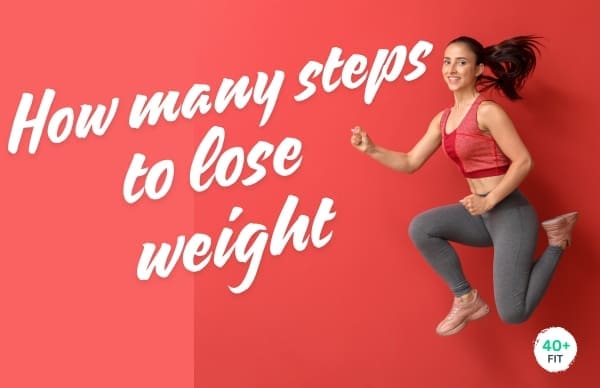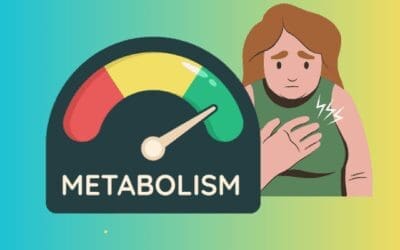Losing weight becomes more challenging as we age, but one of the simplest and most effective methods of shedding pounds is through walking. You might wonder, “How many steps to lose weight?” especially if you’re over 40 and dealing with changes in metabolism, body composition, and energy levels. In this post, we’ll explore how many steps you really need, whether walking alone is enough, and what other factors—like diet, fasting, and body fat percentage—play a role in your weight loss journey.
Walking is a low-impact, accessible form of exercise that is great for your heart, joints, and overall well-being. But does walking alone lead to weight loss, and how long does it take to achieve noticeable changes, especially if you’re looking to lose 10% of your body fat?
Does Walking Alone Help You Lose Weight?
The number of steps required to lose weight will vary depending on your body composition, diet, and activity level. However, many health experts suggest 10,000 steps per day as a general goal for weight loss. This is approximately 5 miles of walking, burning around 300 to 500 calories depending on your weight, speed, and intensity.
For those over 40, walking can be particularly beneficial because it’s a low-impact exercise that doesn’t put undue stress on the joints. But the question remains: will just walking be enough?
Does Only Walking Matter?
While walking is a fantastic start, weight loss is about creating a calorie deficit. That means the number of calories you burn must exceed the number of calories you consume. Walking can certainly help you achieve this, but it might not be sufficient on its own for significant weight loss unless paired with other lifestyle changes, especially as your metabolism slows with age.
For example, if you walk 10,000 steps a day but continue to eat a high-calorie diet, the deficit might not be large enough to trigger weight loss. Combining walking with healthy eating habits is crucial for achieving results.

What About Running or Other Cardio?
You may wonder, “Would running be more effective than walking?” The short answer is yes—running burns more calories in a shorter amount of time compared to walking. However, it’s not always the best option for everyone, especially if you’re over 40 and dealing with joint pain or previous injuries. Running can put strain on the knees, hips, and lower back.
We have also found through the years that increasing steps per day is more sustainable in the long term. Most of our clients will run to ensure they reach their goal but once reached they often start dropping off leading to weight gain.
That being said, you can still vary your walking routine by adding brisk walks, short bursts of jogging, or walking uphill to increase calorie burn and challenge your cardiovascular system without the high impact of running.
For instance:
- Walk briskly for 30 minutes (you should be able to talk but not sing during this pace).
- Incorporate intervals: Walk fast for 3 minutes, then slow down for 2 minutes, and repeat.
These variations can boost your heart rate and help you burn more calories over time.
Do I Need to Be Fasted to Lose Weight?
Fasting, particularly intermittent fasting, has gained popularity as a weight loss strategy. However, fasting isn’t necessary for everyone, and its benefits depend on your individual metabolism and lifestyle. Some people find that exercising in a fasted state helps them burn fat more efficiently because the body uses fat stores for energy rather than food-based fuel.
That being said, fasting isn’t for everyone, especially if you have certain health conditions like diabetes or issues with blood sugar regulation. Consult your healthcare provider before adopting any fasting regimen.
Do I Still Need to Diet?
Yes, diet plays a significant role in any weight loss effort. While walking can help you burn calories, maintaining a healthy, balanced diet is crucial for creating a calorie deficit and sustaining long-term weight loss.
If we have to look at the numbers; one study showed walking 30 minutes 5 days per week may be as beneficial as 60 minutes (in combination with a diet) in promoting weight loss over diet alone.
Here are a few tips:
- Focus on whole foods like vegetables, lean proteins, and whole grains.
- Minimize processed foods and added sugars.
- Control your portion sizes.
- Consider tracking your food intake using an app to stay mindful of calories and nutrient consumption.
Is There a Difference Between Men and Women in Weight Loss?
Yes, there are differences between men and women when it comes to weight loss, especially after 40. Men generally have more muscle mass, which helps them burn calories at a faster rate. In contrast, women may face hormonal fluctuations, such as a decline in estrogen, which can make losing weight more difficult.
Because of these differences, women may need to pay extra attention to their diet and make sure they’re incorporating strength training alongside their walking routine to help maintain muscle mass and support metabolism.
Understanding Body Fat Percentage: Your Starting Point
Before embarking on any weight loss journey, it’s essential to understand your body fat percentage. For most people over 40, losing 10% body fat is a healthy and achievable goal, but it’s important to remember that fat loss doesn’t happen overnight.
- How to Measure: You can measure body fat using skinfold calipers, bioelectrical impedance scales, or consult with a personal trainer or healthcare provider for more precise methods like a DEXA scan.
- Healthy Body Fat Range: For men, a healthy body fat percentage ranges from 18% to 24%, and for women, it’s between 25% and 31%.
How Long Will It Take to Lose 10% Body Fat?
The time it takes to lose 10% body fat depends on several factors, including your starting body fat percentage, activity level, diet, and overall health. It’s important to understand that fat loss is not linear; individuals with higher body fat percentages typically experience quicker initial weight and fat loss compared to leaner individuals. Let’s break this down further to give you a realistic timeline for losing 10% body fat.
Starting Body Fat Percentage Matters
- Higher body fat percentages (e.g., 30% or more): If you’re starting at a higher body fat percentage, your body will often lose fat at a faster rate initially. This is because your body has more fat stores to draw from, and your metabolic rate tends to increase with more mass. You may notice more rapid fat loss during the first few months if you stick to a structured exercise and nutrition plan.For example, someone starting at 35% body fat could lose 1-2% body fat per month in the beginning with consistent effort.
- Lower body fat percentages (e.g., 15-20%): For someone with less fat to lose, the body tends to hold onto fat more stubbornly, and the process will be slower. As you approach leaner levels of body fat, your body will resist further fat loss to preserve energy stores. At this stage, losing 0.5-1% body fat per month is more typical.
Breaking Down the Timeline
The rate at which you lose body fat will depend on creating a caloric deficit (burning more calories than you consume) and maintaining a structured exercise routine that includes both cardiovascular and resistance training.
Here’s a typical breakdown for how long it might take to lose 10% body fat:
- Caloric Deficit:
- To lose 1 pound of body fat, you need to create a deficit of roughly 3,500 calories.
- A safe and sustainable caloric deficit is around 300 – 500 calories per day, which can result in 1-2 pounds of fat loss per week.
- Fat Loss Rate:
- On average, you can aim to lose 0.5-1% of body fat per month, depending on your starting body fat percentage and how consistent you are with diet and exercise.
Example Timelines Based on Starting Point:
- High body fat percentage (e.g., 35%):
- In the first few months, you may be able to lose 1-2% body fat per month, especially if you’re following a well-structured plan. Over time, as you get leaner, this rate will slow down to 0.5-1% body fat per month.
- It could take around 5-8 months to lose 10% body fat if you’re consistent with both your diet and physical activity.
- Moderate body fat percentage (e.g., 25%):
- With moderate fat levels, expect to lose 0.75-1.5% body fat per month initially. As you approach lower body fat levels, the rate will slow down.
- It could take approximately 6-9 months to lose 10% body fat.
- Lower body fat percentage (e.g., 20%):
- If you’re starting leaner, your fat loss will likely be slower, around 0.5-1% per month.
- For lean individuals, it might take 10-12 months or longer to lose 10% body fat.
Factors Influencing the Timeline
- Diet: The more disciplined you are with your nutrition, the faster you can reach your goals. A well-balanced diet that focuses on whole foods, lean proteins, healthy fats, and controlled portions will aid fat loss.
- Exercise Routine: Strength training helps preserve muscle mass during fat loss, which can increase your metabolism. High-intensity interval training (HIIT) and steady-state cardio both support fat loss efforts, but the type and frequency of exercise will affect the speed of results.
- Consistency: People who are consistent in their efforts tend to see results faster. Sporadic adherence to a fat-loss plan will slow progress.
- Age and Metabolism: For those over 40, metabolic slowdown can play a role in how fast you lose fat, though a structured plan can still yield significant results with patience and consistency.
Stay Patient and Consistent
Losing 10% body fat is achievable, but the timeline will vary based on your starting point and individual factors. Higher body fat percentages will see faster initial progress, while leaner individuals may need more time. Typically, expect anywhere from 5 to 12 months to reach a 10% reduction in body fat, with consistency in your diet and exercise routine being the key drivers of success.
Practical Steps to Get Started: How to Walk for Weight Loss
- Start small: If you’re new to walking or exercise, begin with 5,000 steps a day, then gradually increase by 1000 steps a day until you reach 10,000.
- Track your steps: Use a fitness tracker, pedometer, or app to monitor your daily activity.
- Set realistic goals: Aim for 10,000 steps daily, but remember that the intensity and duration also matter.
- Incorporate strength training: As you lose fat, adding muscle through bodyweight exercises like squats, lunges, and planks will support fat loss.
- Stay consistent: Consistency is key. Walk daily, and combine it with mindful eating for best results.
Conclusion: Start Walking Today for Sustainable Weight Loss
So, how many steps to lose weight? The answer depends on your unique body, goals, and lifestyle, but aiming for 10,000 steps per day is a solid start. Remember, it’s not just about the steps—it’s about combining movement with a healthy diet and understanding your body’s needs.
If you’re ready to take the next step, consider signing up for our no-obligation coaching call, where we can see if we are a perfect fit to help you reach your goals. Alternatively, consult with a healthcare provider for personalized advice.
Get walking, and start your journey toward a healthier you today!






